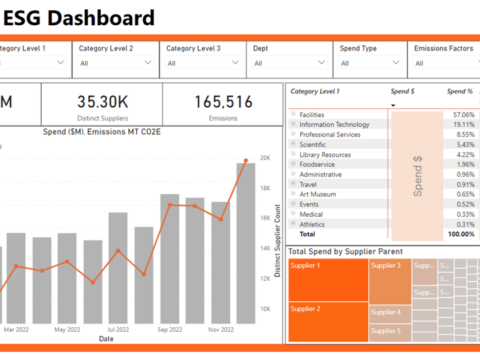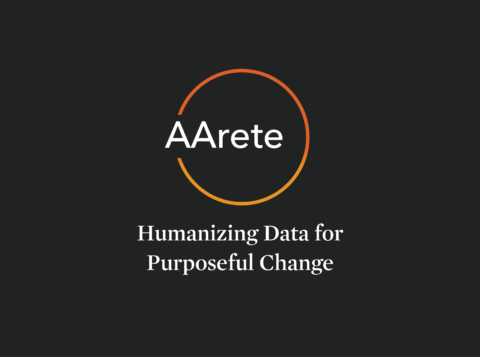Navigating H-1B Volatility: Is it Time to Build a More Resilient Workforce Strategy?
This is an AArete Profitability Improvement insight
The H-1B visa program has helped U.S. companies attract the best and brightest foreign talent for decades. It’s responsible in part for fueling unprecedented tech sector growth and propelling the AI boom.
Recently, the Trump Administration has proposed significant changes to the program, including levying an additional $100,000 one-time fee for each new H-1B visa application. As the new rules work their way through legal challenges, business leaders are scrambling to determine the potential risks and opportunities.
These H-1B changes reflect a broadening trend: the need for companies to adopt nimble workforce strategies. Let’s take a closer look at what the new H-1B requirements mean in practice and how companies can adjust their labor strategies to weather the uncertainty, maintain top talent, and retain a competitive edge.
Clearing Up H-1B Uncertainties
Issued on Sept. 19, 2025, the President’s proclamation sparked some initial confusion, but a few points are now clearer.
The most notable change is the new $100,000-per-visa fee, a sharp increase from the prior $10,000 levy. The higher fee will apply only to new applicants, so it will not impact organizations’ current H-1B workers. However, should a company plan to recruit new H-1B workers, the fee will apply.
Additionally, the proclamation calls for the institution of a wage-based lottery system, aimed at preventing lower-skilled foreign workers from receiving visas above higher-skilled applicants.
Immediate reactions have been mixed. Some organizations will plan to cover the H-1B fees, while many other companies are taking a wait-and-see approach.
Implications Across Industries
Historically, most H-1B visas have been granted to highly skilled and sought-after tech workers, such as engineers, developers, and data scientists. But the proposed H-1B changes will affect any industry that hires skilled foreign workers either directly or indirectly via outsourced labor.
Health insurers, for example, may accelerate their use of offshore resources. Professional services firms may reevaluate current sourcing methods based on need and impact. Growth-minded startups could lose out on talent if they cannot absorb the higher visa fees. And companies in healthcare and higher education may experience downstream staffing shortages.
Organizations must also consider the potential wage implications of the proposed changes. A lack of specialized resources will increase the salary floor for these positions. Although a recent wave of corporate layoffs across industries may offset these increases in the short term, organizations may need to raise salaries over the long haul to stay competitive in the talent market.
Workforce Strategy Refresh: The Time is Now
The H-1B changes add to the urgent need for organizations to re-evaluate their workforce strategies now. Each potential shift must be weighed carefully against tradeoffs in performance, cost, and flexibility. For example:
- Hiring onshore resources (H-1B and non-H-1B) will deliver high performance and high cost.
- Contractors bring high flexibility and lower risk, but will also be expensive.
- Temporary labor is a potential fix, but only as a stopgap. Reliance on temp staff will likely hurt performance over the long haul.
- Offshoring can lower costs and potentially reduce a U.S. regulatory company’s exposure.
Emerging Workforce Strategy Trends
Forward-thinking organizations are transforming how work gets done, reassessing the mix of onshore, offshore, and in-house staff. Third-party labor can play a pivotal role in helping companies diversify their workforces in key areas—IT, call center, finance, data and analytics, revenue cycle management—without extending internal resources. Three leading models include:

Offshore Staff Augmentation
Emerging markets are playing catchup with the U.S. in terms of skilled labor, offering new location-of-service options. India, for example, houses more than half the world’s Global Capacity Centers and ranks No. 1 among all nations for AI skill penetration. Philippines and parts of the Eastern European Union (Poland, Romania) represent other growth markets for higher-quality talent.

Managed Services
In a pure Managed Services arrangement, the focus is on the SOW—achieving the contracted deliverable—and not on resources, thereby shielding companies from regulatory risks.

Business Process as a Service (BPaaS)
BPaaS enables organizations to offload non-core functions to specialized providers, gaining unique expertise and thought leadership in the process.
BPaaS and Managed Services models are highly scalable and cost-effective. In both cases, companies should carefully monitor service level agreements (SLAs) and hold their partner accountable for meeting them.
Choose the Best Path
When it comes to rethinking workforce strategies, there is no “right way” or “wrong way.” The key is to step back and look honestly at how the organization gets work done today.
What does our talent mix look like? Do we have the right balance of in-house, contingent, and third-party workers?
How do we compare with others in our industry? Are our costs and delivery models keeping pace with our peers?
Where do we create real value? Which skills or functions are key differentiators, and which ones could be enhanced with third-party labor strategies?
AArete helps clients perform this assessment, developing detailed scenario planning to evaluate the strengths and weaknesses of each potential lever.
Seeking Strategic Guidance
Shifting workforce models requires careful planning and in-depth market intelligence. That’s where a strategic partner can help.
The consultants at AArete help leading organizations redesign their workforce strategies to align with their business goals. We begin with a thorough assessment of your current organizational structure and compare it to industry standards. Then we weigh the potential impact of H-1B visa changes and other market factors. We then recommend interventions that meet each organization’s unique needs, whether it’s exploring BPaaS and Managed Services or offshoring.
From performing OpEx and CapEx assessments to driving meaningful savings, gaining executive buy-in, and negotiating vendor contracts, AArete helps leaders find solutions to solve their most complex challenges.
Learn more about our Profitability Improvement services.
Meet The Authors

Gonzalo Higuero
Senior Consultant

Daran Wynn
Senior Consultant

























































































